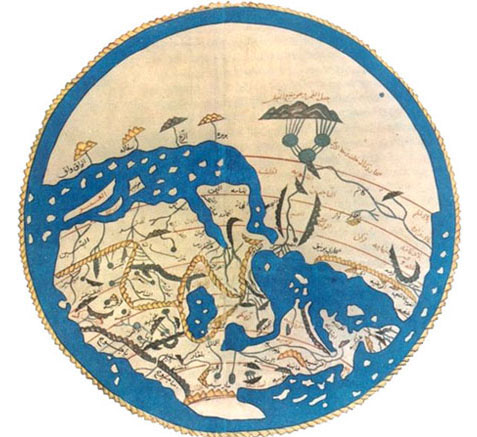Article of the Month - July 2021
“A Late Antique Kingdom's Conversion: Jews and Sympathizers in South Arabia”
(Valentina A. Grasso: Institute for the Study of the Ancient World
- New York University)
Valentina A. Grasso, "A Late Antique Kingdom's Conversion: Jews and Sympathizers in South Arabia"
Journal of Late Antiquity 13 (2020): 352-382
Article Abstract:
This article delves into the relationship between South Arabian Jews and Jewish sympathizers and offers an interpretative framework for the monotheism of fourth- and fifth-century Ḥimyar which contextualizes the choice of South Arabia’s elites to become Jewish sympathizers. The process of conversion to monotheism also shares features with the first stage of Christianity in Aksūm and in the Graeco-Roman world, as well as the henotheism of pre-Islamic North Arabia. I argue that the Ḥimyarite kings’ cautious conversion follows a broad late antique trend which aimed to ease the transition for their subjects and/or to assume a neutral position towards the developments of the surrounding empires. In the brand new reign of Ḥimyar, the cult of a single, institutionalized, and translocal deity provided a strong mechanism for establishing identities which were reshaped in a wider syncretistic framework through a socio-political exploitation of cults, as characteristic of the broader late antique world.
Keywords: Late Antiquity - Judaism - South Arabia - Himyar - Christianity - Aksum - epigraphy
Nomination Statement:
Dr. Grasso’s account of Ḥimyar Jewish and Jewish-adjacent monotheism, and more broadly, the history of socio-political consolidation in fourth/fifth century southern Arabia is fascinating. This subject has not received enough scholarly attention, and this article does much to redress that lacuna. It also contains important insights about conversion and religious identity more generally: what does it mean to ‘fully convert’? How can the historian tell if someone is ‘really’ Jewish? Christian? Something else entirely? For a historian of the late antique Roman world, the parallels between Hellenistic ‘God-fearers’ of early Christianity and the Ḥimyarite monotheists, and between the official conversion of the Ḥimyarite kingdom to monotheism and the early Christian emperors of Rome are particularly interesting. In short, this is one of the best syntheses of the South Arabian materials currently available. A truly impressive and comprehensive treatment of a difficult and complex subject.
Author’s Comment:
This is the third chapter of my doctoral dissertation which pulls together the various strands of the composite cultural and political milieu of pre-Islamic late antique Arabia situating its history in relation to the broader late antique environment. I started working on the history of pre-Islamic Arabia for my MA dissertation in 2016 and soon realised that my MA project could have been expanded into a PhD project. This realisation lead me to apply for PhDs programs in the UK (I was an Erasmus student at SOAS London at the time) and then to accept a PhD offer from the University of Cambridge where I worked for the last 3.5 years under the supervision of Professor Garth Fowden and the sponsorship of the AHRC and the Cambridge Trust. I wrote this article during my second year at Cambridge while I was exploring how the South Arabians reshaped their identity through a socio-political exploitation of cults which shared features with the first stage of Christianity in Aksūm and in the Graeco-Roman world. The article thus focuses on rise of Judaism in South Arabia, offering an interpretative late antique framework for the monotheism of fourth- and fifth- century Ḥimyar and contextualizing the choice made by South Arabian elites to become Jewish sympathizers. I hope to spend more time working on this topic in the next two years when I will be based at ISAW in New York.
Read the article here.
Would you like to discuss this article?
Start a thread on the Mediterranean Seminar list-server
See the other Articles of the Month here.
